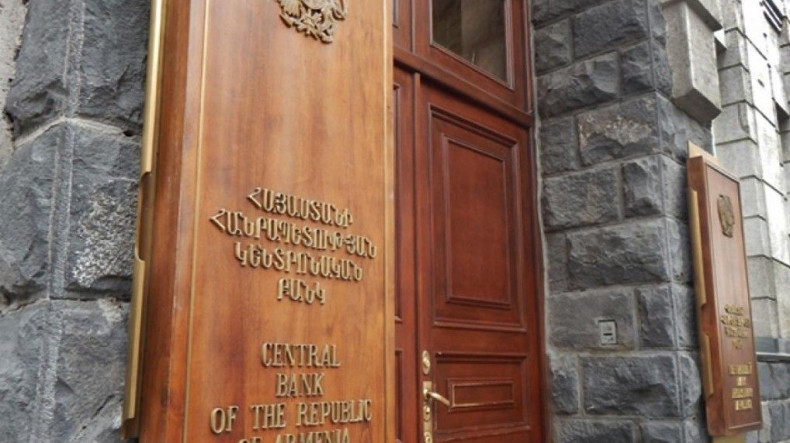
Armenia's Central Bank reduces refinancing rate by 0.25 pp
At its meeting on Tuesday, the Board of the Central Bank of Armenia decided to decrease the key policy rate (refinancing rate) by 0.25 percentage points, setting it at 7.25 percent. The Board agrees that a lower refinancing rate is necessary to continue to meet its price stability objective of ensuring an inflation rate of 4 percent over the medium term.
Annual CPI inflation has continued to remain below the target, registering 0.6% in September 2024. Core inflation has also remained at low levels, at 0.7% year-over-year in September, the CBA said in its executive monetary policy statement.
In Q4 2024, risks of slowing economic growth globally and in the key trading partner countries of Armenia continue to persist. Global inflation continues to slow; however, sticky prices in key trading partner economies continue to remain relatively elevated. Persistent geopolitical uncertainties in the Middle East, as well as growing tensions in international trade relations, continue to create risks for future growth in global commodity prices and potential disruptions in global supply chains. At the same time, labor market conditions in key trading partner countries, particularly the United States, are gradually easing in tandem with a measured adjustment in demand conditions. Conversely, uncertainty about the scale of impacts of fiscal policy on aggregate demand conditions in the US has risen. In this context, advanced economy central banks would be expected to continue to gradually ease policy rates in the near term, while still maintaining a relatively tight stance. Consequently, the external environment would be expected to transmit weak inflationary pressures on the Armenian economy, while embodying some upside risks.
Economic activity in Armenia somewhat softened in the third quarter, but continues to remain above its stable, long-term levels. Growth in economy activity has largely been driven by meaningful growth in construction, services, and trade. These dynamics continue to be impacted by certain short-term factors, posing significant uncertainty with respect to the sustainability of economic growth and its long-term outlook, as well as the future trajectory of domestic demand and consumption conditions. Despite strong economic activity in the current period, external demand for domestic services continues to slow. Labor market conditions continue to somewhat cool amid these conditions, as reflected in stabilizing wage growth, non-traded sticky price inflation, and inflationary expectations. At the same time, risks for additional demand pressures stemming from fiscal policy persist.
In order to manage possible risks stemming from conditions of high uncertainty, the Board considers multiple scenarios during its deliberations. On the one hand, the Board discussed scenarios where possible underlying developments would require a higher path for the policy rate relative to current market expectations. These Case A-type scenarios include those related to uncertainty about the country risk premium and the neutral interest rate. On the other hand, the Board discussed Case B-type scenarios where potential economic developments—including risks of low inflation expectations and a weak demand environment emerging—would cause inflation to remain at a persistently low level. This would imply a more rapid and aggressive downward path for the policy rate than what is currently priced in markets in order to sustainably stabilize inflation at the target in the medium-term horizon.
While the Board believes that while there is a greater likelihood of Case B-type scenarios materializing, it emphasizes the importance of minimizing the losses that could stem from the Case A-type risks. The Board thus finds it appropriate to continue to gradually ease the policy stance. The Board resolutely affirms its commitment to adopting the appropriate policy actions and strategy to ensure the price stability objective of 4% inflation in the medium term.
Newsfeed
Videos






























